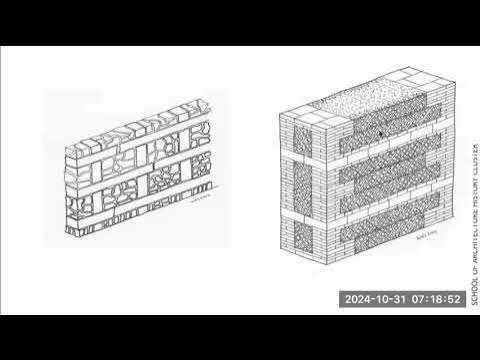Roman Engineering: Crash Course History of Science #6
Summary
TLDRThis script explores the Roman Empire's engineering prowess, highlighting their innovations in concrete, aqueducts, and road construction that have stood the test of time. It contrasts the Romans' practical achievements with their limited theoretical contributions to science, emphasizing the political nature of knowledge and the dichotomy between 'useful' and 'theoretical' knowledge. The script also touches on the role of slavery in Roman engineering and the ethical implications of technological advancements.
Takeaways
- 🏛 The Romans were adept at engineering and constructed enduring structures like roads and aqueducts, which are still standing today.
- 🏗 They utilized arches and domes in their architecture, creating large, open spaces that were visually impressive.
- 🚰 Roman aqueducts were an engineering marvel, efficiently moving thousands of tons of water to supply their cities.
- 📚 The Romans inherited much of their knowledge from the Greeks, including geometry, physics, and astronomy.
- 🏛️ The Romans' practical application of Greek knowledge led to advancements in engineering but not necessarily in theoretical understanding.
- 🔍 The distinction between 'useful' and 'theoretical' knowledge was made by Aristotle, influencing how the Romans viewed knowledge.
- 🏫 Institutions like the Library of Alexandria and the Museum in Pergamon were centers of learning that contributed to the spread of knowledge.
- 🏗️ Roman concrete, or opus caementitium, was a significant innovation that allowed for the construction of durable and complex structures.
- 🛣️ The Appian Way is an example of Roman road-building, showcasing their advanced logistics and the importance of infrastructure for trade and military purposes.
- 👥 Roman engineering achievements were supported by a large labor force, which included a significant number of slaves, highlighting the political nature of technology and science.
Q & A
What is the significance of Roman concrete in the context of the script?
-Roman concrete, or opus caementitium, was a significant innovation that allowed the Romans to create durable structures with unique shapes like domes. It was used in the construction of the Pantheon, which features a massive concrete dome that has stood for nearly two thousand years.
How did the Romans' use of arches and domes in architecture differ from right-angled structures?
-The Romans discovered that arches could support more weight than straight joints, which was crucial for moving heavy loads like water over long distances. This understanding led to the construction of arched aqueducts and allowed for the creation of monumental buildings with large, open interiors.
What role did the Greek influence play in Roman knowledge and engineering?
-The Romans inherited much of their knowledge from the Greeks, particularly in geometry, physics, astronomy, and other disciplines. Roman engineering built upon Greek engineering, and their culture is often referred to as 'Greco-Roman' due to the integration of Greek thought and knowledge.
What was the function of the Museum in Alexandria during the Hellenistic period?
-The Museum in Alexandria was not a museum in the modern sense but functioned more like a research university. It was a center for learning and research, attracting scholars from across the Hellenistic world.
Who was Archimedes and why is he significant in the context of Roman and Greek history?
-Archimedes was a renowned mathematician and inventor from Syracuse who fought for the Greeks against the Romans. He is famous for his work in geometry, inventing the water screw and compound pulley, and designing various machines for warfare. His death at the hands of a Roman soldier symbolizes the end of an era of Greek science.
What is the difference between technē and epistēmē as described in the script?
-Technē, from which we derive 'technology,' refers to practical, hands-on knowledge that is learned by doing and can be seen in the real world. Epistēmē, the root of 'epistemology,' represents theoretical knowledge, which is abstract and often represented by formulas and theories.
Why was Claudius Ptolemy's work on planetary motion influential?
-Claudius Ptolemy developed a complex mathematical model to explain the observed movements of the planets, incorporating epicycles and deferents. His work, the Almagest, became the basis for understanding the universe in the medieval Christian and Islamic worlds.
How did the Romans' engineering achievements impact the growth of their cities and the empire?
-Roman engineering, particularly in the construction of roads, aqueducts, and sewer systems, allowed for efficient movement of troops, trade, and resources. This infrastructure supported the growth of cities, the operation of mines, and the irrigation of dry lands, contributing to the stability and expansion of the Roman Empire.
What is the historical significance of the Appian Way mentioned in the script?
-The Appian Way was a crucial Roman road that connected Rome to the southeastern regions of Italy. It was an engineering marvel with drainage ditches and a cambered design to facilitate efficient movement of troops and resources, contributing to the military and economic strength of the Roman Empire.
How did the Roman state's optimization of public works and infrastructure reflect its political power?
-The Roman state's development of a complex legal system, a well-supplied army, public food assistance, and massive public games, along with the construction of infrastructure like roads, aqueducts, and the Colosseum, demonstrated its political power and ability to mobilize resources for the benefit of the empire and its citizens.
Outlines

Esta sección está disponible solo para usuarios con suscripción. Por favor, mejora tu plan para acceder a esta parte.
Mejorar ahoraMindmap

Esta sección está disponible solo para usuarios con suscripción. Por favor, mejora tu plan para acceder a esta parte.
Mejorar ahoraKeywords

Esta sección está disponible solo para usuarios con suscripción. Por favor, mejora tu plan para acceder a esta parte.
Mejorar ahoraHighlights

Esta sección está disponible solo para usuarios con suscripción. Por favor, mejora tu plan para acceder a esta parte.
Mejorar ahoraTranscripts

Esta sección está disponible solo para usuarios con suscripción. Por favor, mejora tu plan para acceder a esta parte.
Mejorar ahora5.0 / 5 (0 votes)






